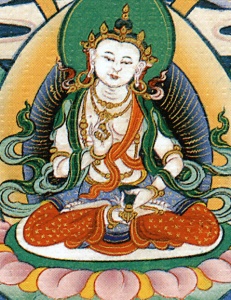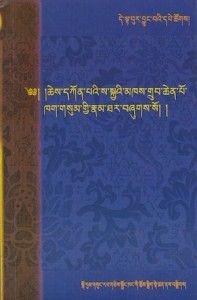As a follow-up to the previous post, here are some thoughts about another (relatively) recently discovered text by Jamyang Khyentse Chökyi Lodrö.
A Guide to the Vairotsana Practice Place in Dzamnang (ཛཾ་ནང་བཻ་རོའི་སྒྲུབ་གནས་ཀྱི་དཀར་ཆག) concerns the sacred place of Pema Shelpuk (པདྨ་ཤེལ་ཕུག), or Lotus Crystal Cave, near Dzongsar Monastery.1 This is counted as one of the twenty-five great sites of Kham—indeed, it is described as the most exalted of them all. The site was first opened by Chokgyur Dechen Lingpa (1829–1870) and Jamyang Khyentse Wangpo (1820–1892) at the end of 1856 at the time when the pair also revealed the Three Sections of the Great Perfection (rdzogs chen sde gsum) terma cycle there.2 That cycle includes a guide or catalogue/inventory (dkar chag) that describes the qualities of the place and the benefits of practising and circumambulating there.3
Jamyang Khyentse Chökyi Lodrö’s own short guide focuses on the Vairotsana cave at the site. The text tells us that this is where Vairotsana practised, that the Three Root deities are actually present there, and that further treasures lie hidden, waiting to be revealed.
Continue reading




 Orgyen Tendzin Norbu (o rgyan bstan ‘dzin nor bu, 1841–1900) is something of an elusive figure in recent Nyingma history. Until recently, not much was known about his life, and even his dates were a mystery; his own writings appear to have been lost, and his final testament, recorded in the few brief biographies available to us, is decidedly enigmatic.
Orgyen Tendzin Norbu (o rgyan bstan ‘dzin nor bu, 1841–1900) is something of an elusive figure in recent Nyingma history. Until recently, not much was known about his life, and even his dates were a mystery; his own writings appear to have been lost, and his final testament, recorded in the few brief biographies available to us, is decidedly enigmatic.
 Introduction
Introduction
You must be logged in to post a comment.